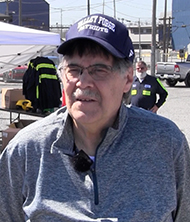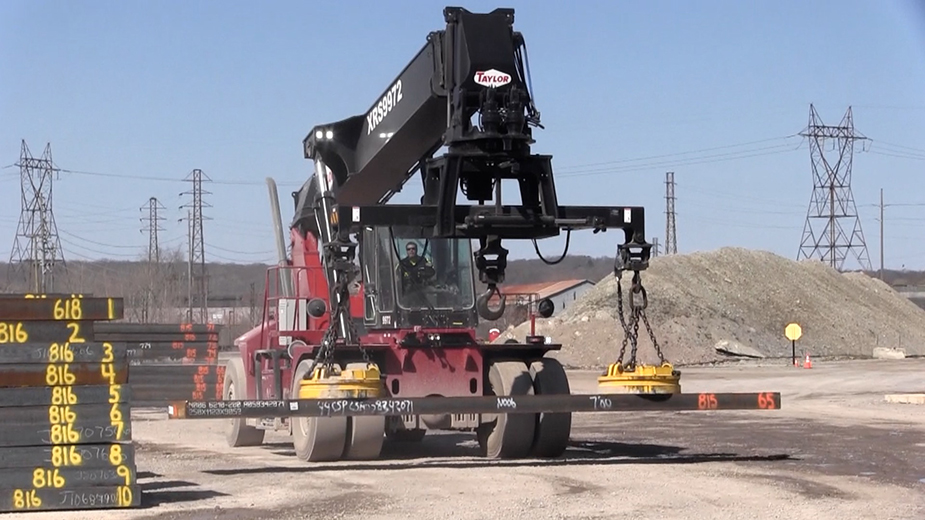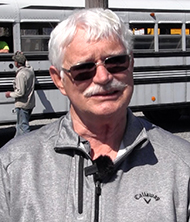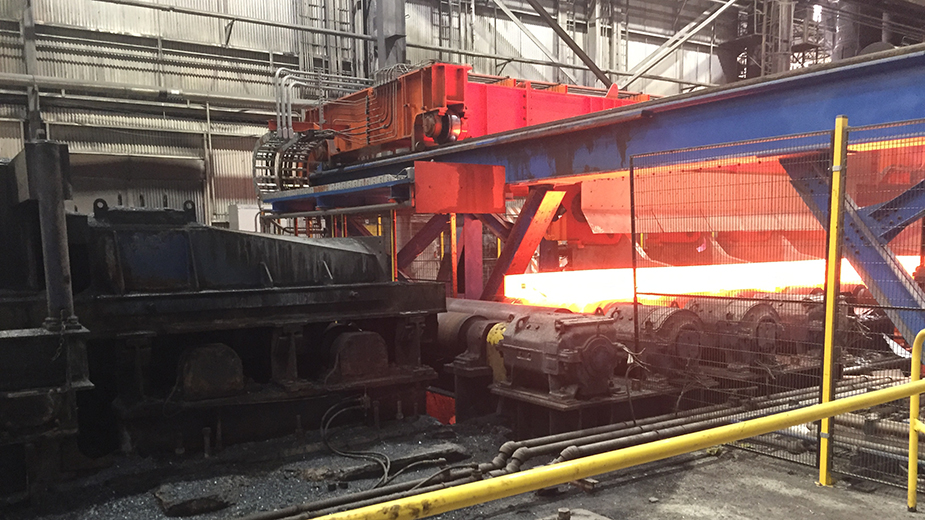FARRELL, Pa. – Robert Inman first entered the gates in 1971 of what was the Sharon Steel Corp. in Farrell, Pa. Over the next 49 years, the retired steelworker watched as the company passed through other owners – Caparo Steel Corp., then Duferco Steel Corp. and, today, NLMK Pennsylvania.
Throughout this period, he’s witnessed the last days of Big Steel in the region and the industry’s retrenchment but continued to work at the Farrell plant through all of the industry’s trials.
On April 12, Inman and more than 50 other retirees received a glimpse of the industry’s future and stood in awe of how technology and efficiency have changed the entire industry.
“I’m very impressed, very impressed,” he said. “It’s a lot different. It’s amazing.”

NLMK invited retirees and select media to tour the plant’s new walking beam furnace, a $95.4 million investment that the company made to upgrade its efficiency, product quality and competitiveness.
Inman said he retired just three years ago and the new furnace is a testament to just how quickly technology has changed the industry.
For example, Inman, a former furnace charger, said when he retired the plant operated three furnaces that were used to reheat steel slabs. Those slabs are then rolled into steel coil and sold to steel service centers and manufacturers.
“Everything was manual,” he recalled. “The crane had to put the slabs on the platform. We had to push them off, roll them down the rolls and stick them into the reheat furnaces. When the red light came on, we pushed the slab out of all three furnaces.”
The new walking beam furnace is able to perform the work of all three other furnaces combined, whose production will be phased out. The new furnace has been in operation about one month.
Bill Benson, vice president of operations of NLMK Pennsylvania, said the new furnace represents a dramatic leap regarding the plant’s production capabilities.
“The old three furnaces were 1960s and 1970s technology,” he said. “This is a huge state-of-the-art jump for our facility.”

Together, those three antiquated furnaces were able to reheat between 395 tons and 400 tons per hour, just about equal to the single new walking beam furnace, Benson said. It’s among the most efficient furnace of its kind in the country, he added.
“This furnace is a little longer than most furnaces in the U.S., making it more efficient,” Benson said. “It’s one of the most efficient furnaces that its manufacturer, Tenova, has made in the United States.”
NLMK Pennsylvania, a division of Russian steelmaker NLMK Group, purchases steel slab from producers all over the country and internationally, Benson said.
“Right now, we’re slab sourcing from five different companies,” he said. The majority of these slabs are produced in the United States, while some are sourced from Brazil.
Each slab is generally between 8 and 12.4 inches thick, 33 inches and 61 inches wide, while the length can vary between 362 inches and 380 inches. These slabs are heated to 2,350 degrees in the furnace, discharged, and then moved through several rolling stands.
The steel comes off the mill as a hot-rolled coil, which is either sent directly to customers or undergoes further processing through a de-pickling or galvanizing line, Benson said.
Benson explained the older, “drop-out” process often led to defects. “The old furnaces shoved the slabs through, tearing the bottom of the slabs on the skids, and then dropping out of the furnace onto the rolls into the mill, causing defects on the strip,” he said.

In contrast, walking beam technology allows the slabs to be lifted and moved through the furnace, thus eliminating skin tears at the bottom of the slabs.
“All the slabs are picked up, moved forward and set back down,” he said. “They’re never really exposed to grips and tears on the bottom. It’s a huge quality improvement.”
The result is greater energy efficiency and lower emissions, Benson said, since the furnace is fueled by natural gas.
Plans to install a new walking beam furnace date to 2006, when Duferco Corp. operated the plant. However, the company was never able to give final approval to the project, Benson said.
It was revisited in 2014 after NLMK purchased the Pennsylvania mill.
However, other challenges delayed the project. Tariffs on imported slab imposed by the Trump administration in 2018 drove costs up significantly. NLMK subsequently won a settlement that resulted in the U.S. government refunding a “significant portion” of tariffs the company had paid.
The COVID-19 pandemic also proved to be a compromising factor in delaying the project, Benson said.
Most of the furnace work was completed between fall 2021 and fall 2022.

For retiree Sonny Dickson, who first began work at what was Sharon Steel in 1968, the new furnace represents not just a wholesale change from what he once experienced, but also security for the entire plant and its employees.
“This is the future now,” Dickson said. “This is going to keep this company going.”
Dickson recalls the era of the late 1960s, when the mill teemed with approximately 10,000 employees operating open hearths, blast furnaces and melt shops.
Those melt shops have long since been decommissioned, and mills today no longer have the employment rolls of a half-century ago.
Still, Benson said continued investment is critical to maintaining product quality and enhances the plant’s competitive position.
“The future of our facility and our 750 employees is important to us and the Shenango Valley,” Benson said. “Today, that future is more secure because of this investment.”
Pictured at top: A slab goes into the new walking beam furnace at NLMK Pennsylvania in Farrell.
